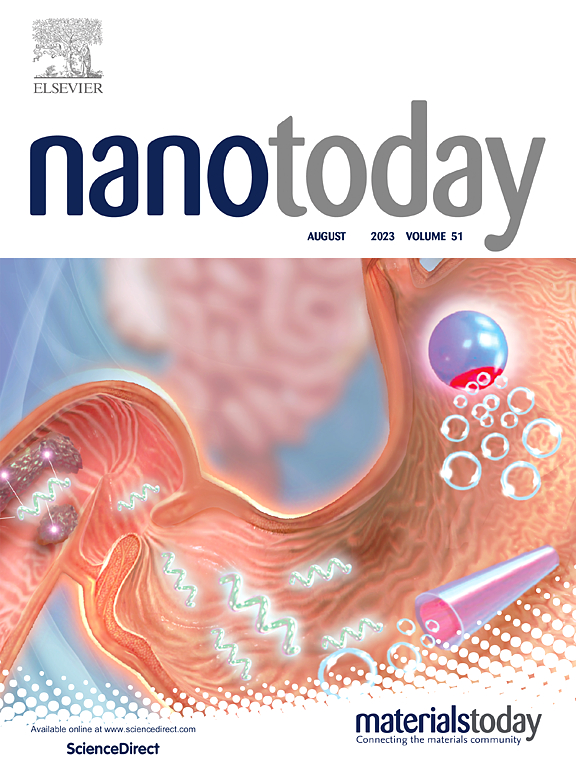多相流微流控分选揭示了细胞链长度依赖的致病异质性
IF 10.9
1区 材料科学
Q1 CHEMISTRY, MULTIDISCIPLINARY
引用次数: 0
摘要
由于缺乏精确和温和的分类方法,描述微观和纳米级病原体的形态学相关致病异质性仍然具有挑战性。在这里,我们报告了一种多相流微流体方法,用于基于细胞形态的无标记,高分辨率的变形链球菌(S. mutans)分选。通过在微通道中共流动粘弹性流体(加入聚乙烯氧化物PEO)和牛顿流体(PBS),弹性和惯性升力的协同效应导致变形链球菌(直径0.5 μm)的链长依赖迁移和分选为短链(0.6-2 μm)、中链(2-4.5 μm)和长链(4.5-15 μm)亚群,分离效率>; 77.8% %,纯度>; 85 %,生存力>; 98.5 %。值得注意的是,我们发现细胞链长度是S. mutans致病性的关键因素。与中链和短链亚群相比,长链亚群表现出增强的生物膜形成,更强的抗吞噬能力和更高的抗菌药物MIC50。我们的微流控分选方法为研究病原菌异质性提供了新的工具。本文章由计算机程序翻译,如有差异,请以英文原文为准。
Multiphase flow-enabled microfluidic sorting reveals cellular chain length-dependent pathogenic heterogeneity
Delineating morphology-related pathogenic heterogeneity of micro- and nano-sized pathogens remains challenging due to the absence of precise and gentle sorting methods. Here, we report a multiphase flow-enabled microfluidic approach for label-free, high-resolution sorting of Streptococcus mutans (S. mutans) based on cellular morphology. By co-flowing viscoelastic fluid (S. mutans spiked with polyethylene oxide, PEO) and Newtonian fluid (PBS) in the microchannel, the synergistic effect of elastic and inertial lift forces leads to chain length-dependent migration and sorting of S. mutans (0.5 μm in diameter) into short- (0.6–2 μm), medium- (2–4.5 μm), and long-chain (4.5–15 μm) subpopulations, achieving separation efficiencies > 77.8 %, purities > 85 %, and viabilities > 98.5 %. Notably, we reveal that the cellular chain length is a critical factor for pathogenicity of S. mutans. The long-chain subpopulation exhibits enhanced biofilm formation, stronger resistance to phagocytosis, and higher MIC50 of antibacterials compared to medium- and short-chain subpopulations. Our microfluidic sorting method offers a new tool for studying pathogenic heterogeneity.
求助全文
通过发布文献求助,成功后即可免费获取论文全文。
去求助
来源期刊

Nano Today
工程技术-材料科学:综合
CiteScore
21.50
自引率
3.40%
发文量
305
审稿时长
40 days
期刊介绍:
Nano Today is a journal dedicated to publishing influential and innovative work in the field of nanoscience and technology. It covers a wide range of subject areas including biomaterials, materials chemistry, materials science, chemistry, bioengineering, biochemistry, genetics and molecular biology, engineering, and nanotechnology. The journal considers articles that inform readers about the latest research, breakthroughs, and topical issues in these fields. It provides comprehensive coverage through a mixture of peer-reviewed articles, research news, and information on key developments. Nano Today is abstracted and indexed in Science Citation Index, Ei Compendex, Embase, Scopus, and INSPEC.
 求助内容:
求助内容: 应助结果提醒方式:
应助结果提醒方式:


